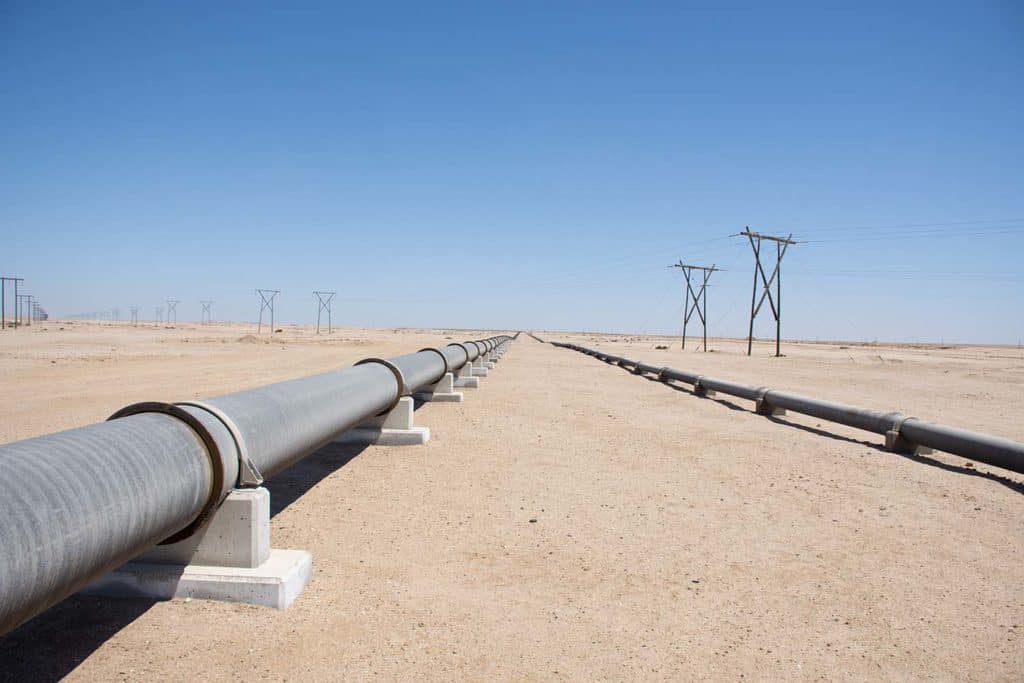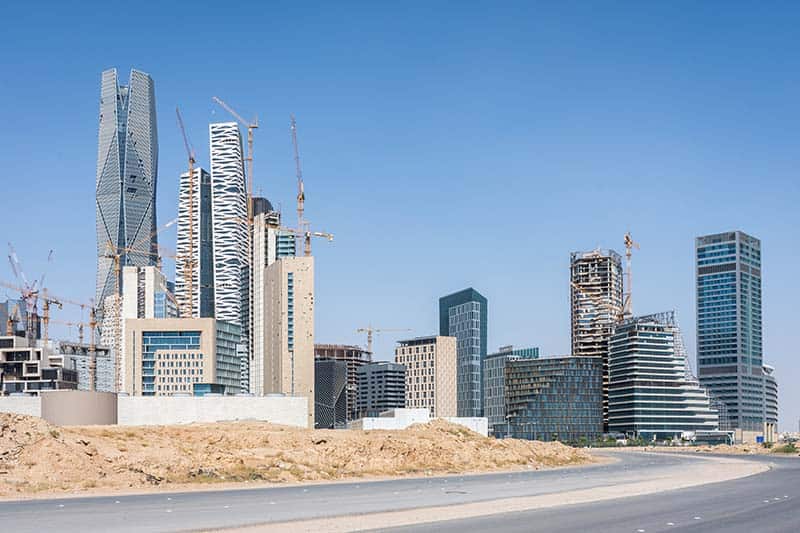CASE STUDY
OptaSense Provides Monitoring for Critical Saudi Arabia Water Pipelines

Ras Al-Khair and Riyadh City Projects, Kingdom of Saudi Arabia
Problem:
- Accidental damage to newly installed large pipeline systems by home, road and other construction activities
Solution:
- OptaSense Pipeline Monitoring System
- Quick, Accurate Location Identification
- Hazardous Activity Classification
- Proactive Response Before Damage Occurs
Value Delivered:
- Reduction of Incidents
- Continuous TPI Monitoring
- Fewer Unwanted Alerts
Project Overview
With over 2 million square kilometres, the Kingdom of Saudi Arabia is a vast country, almost nine times the size of the United Kingdom. Most of the land is arid with no continuous flowing rivers, lakes or other natural water reserves. To sustain the swiftly growing population of over 66 million, a large portion of fresh water needs to be generated by desalination.
The government-owned Saline Water Conversion Corporation (SWCC) operates 31 desalination plants in 17 locations along the East and West coasts of Saudi Arabia. Through a pipeline network of more than 5,600 km, the treated water is transported into more than 46 governorates and cities throughout the Kingdom.
Ras Al-Khair Supply Pipelines
Ras Al-Khair is the location of a desalination project on the east cost of Saudi Arabia. The plant supplies water to Riyadh, Al Majma’ah, Shaqraa, Al-Ghat, Thadig, and Al Zulfi through a total of 914km of pipeline. OptaSense began installation of Phase 1 of the project in March 2019.
Riyadh City Feeder Pipelines
Three pipelines within Riyadh, amounting to 133 km are ensuring the transport of water from the city reservoirs to terminal stations for the distribution to the consumer. OptaSense will install its latest distributed fiber-optic sensing (DFOS) system on all three critical feeder pipelines following the completion of the Ras Al-Khair Phase 1 installation.
Advanced Monitoring Solution
To address the customer’s problem, OptaSense® engineers suggested the installation of the OptaSense Pipeline Monitoring System (PMS) for third-party intrusion (TPI) detection. The OptaSense PMS offers a variety of detector applications to monitor right of way and third-party interference, geohazards, theft, and critical infrastructure in real time, from a single operating system. Offering third party interference monitoring and right of way detection, the OptaSense system can alert the pipeline operator of potentially hazardous activity occurring within the pipeline corridor, such as digging, vehicle movement and other large machinery, before contact with the pipe is made.
Activities or events that occur along a pipeline produce unique sounds and vibrations, which DFOS can detect. Using advanced processing, these unique acoustics are analyzed to eliminate background noise and then converted into a high resolution visual. By applying advanced algorithms, these sounds and vibrations are deciphered to create specific alarms for a given event or sequence of events— allowing the operator to monitor individual or interactive threats, where and how often they occur, whether they are time-dependent and their potential of becoming a major issue.
OptaSense has a strong track-record of providing TPI monitoring solutions in both urban and desert environments and is well-prepared for future expansion of these water pipeline projects due to the continuing growth of Riyadh and other Saudi Arabian cities.

Added Benefit
The aim of both projects is to contribute to the integrity of the water pipelines and thus secure an uninterrupted water supply to the Saudi consumer. For example, any potentially harmful construction activity near the pipeline will generate an alert that can be addressed before any damage can occur. Further, the ability to automatically classify specific events such as mechanical or manual digging will allow the client to minimize unwanted alerts while providing an enhanced situational awareness of the right-of-way. With 80% of all pipeline leaks attributed to third-party intrusion, the ability to detect potentially harmful activities quickly and accurately has never been greater.
For more information, please contact your OptaSense representative or visit optasense.com/pipeline-monitoring.

